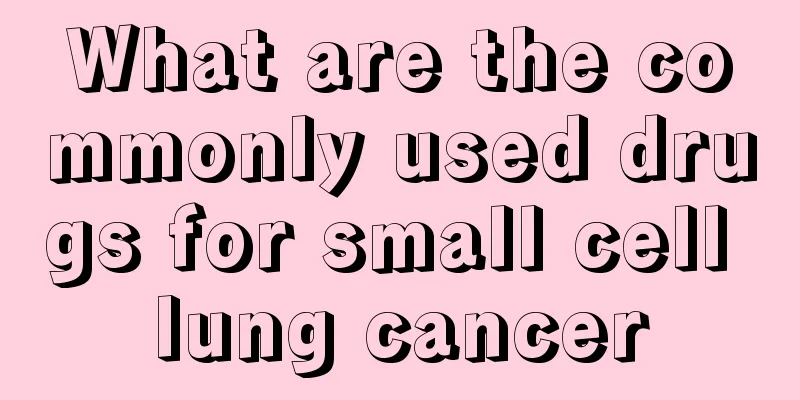What are the commonly used drugs for small cell lung cancer

|
People who smoke are most likely to develop small cell lung cancer. The current natural pollution situation is quite serious, which has led to a significant increase in the number of people suffering from small cell lung cancer. There are many types of this disease, and there are also many drugs for treatment. Let us take a look at the commonly used drugs for small cell lung cancer. Small cell lung cancer accounts for 15% of lung cancer cases, and most (about 98%) are related to smoking. Clinically, it is divided into limited stage and extensive stage according to the scope of invasion. Limited stage: The lesion is located in one half of the chest cavity and can be safely surrounded by a radiation field. Only less than 5% of patients can receive surgical treatment, and the rest should be given synchronous chemotherapy + radiotherapy, except for those without lymph node metastasis, who need chemotherapy alone. Chemotherapy regimen: cisplatin + edioplatin. If cisplatin is not tolerated, carboplatin can be substituted. Radiotherapy starts in the first or second cycle; the dose can be twice a day, 1.5Gy/time, cumulative 45Gy; once a day, 1.8-2.0Gy/time, cumulative 60-70Gy. Extensive stage: The lesion exceeds one half of the chest cavity, including malignant pleural effusion or pericardial effusion or blood metastasis. If combined with local symptoms, such as superior vena cava compression, pulmonary infarction, bone metastasis, spinal cord compression, chemotherapy + radiotherapy should be given. If patients with brain metastases have brain symptoms, radiotherapy + chemotherapy is given; otherwise, chemotherapy first and then radiotherapy. Chemotherapy regimen: cisplatin + estoplatin, carboplatin + estoplatin, cisplatin + irinotecan, carboplatin + irinotecan, cyclophosphamide + doxorubicin + vincristine. Patients with recurrence and metastasis who relapse within 2-3 months and are in good physical condition can be treated with cyclophosphamide, taxanes, gemcitabine, irinotecan, and topotecan. Patients who relapse within 3-6 months can be treated with topotecan, irinotecan, cyclophosphamide + doxorubicin + vincristine, gemcitabine, taxanes, oral etoposide, and vincristine. Patients who are over 6 months old can continue with the original regimen. In summary, for limited-stage, marginal, operable small cell lung cancer, surgery can be used after neoadjuvant chemotherapy; for extensive-stage small cell lung cancer, chemotherapy supplemented with radiotherapy is still the main treatment, and brain metastasis should be actively prevented. |
<<: What are the treatment principles for small cell lung cancer
>>: What are the commonly used drugs for treating small cell lung cancer
Recommend
Can gaps between teeth be filled?
Many people do not pay much attention to their de...
Why do I always have bloating?
Some people experience stomach pain and often fee...
What to do if your feet are sweaty and slippery when wearing sandals
There are many girls who love beauty very much. I...
What to do if ear cartilage hurts when pressed by hand
Otitis media is a common disease. If it is seriou...
Are there any side effects of dental implants?
When teeth fall out or become chipped, it greatly...
What are the side effects of thread lifting
For women, one of the most frightening issues is ...
Is the chance of lung cancer being inherited high?
Lung cancer: Reports show that if a person has a ...
What are the common causes of lung cancer? These 5 factors are very likely to induce lung cancer
Expert introduction: Lung cancer is a very common...
How to treat insomnia caused by deficiency of both heart and spleen?
Deficiency of both the heart and spleen often occ...
What are the precautions for injecting hyaluronic acid?
Hyaluronic acid injection is a very common beauty...
Treat left eyelid twitching scientifically
Sometimes our left eyelid will twitch and we feel...
How long does it take to treat hair loss
Nowadays, due to excessive stress in life, unbala...
How to recover quickly after a coccyx fracture, do you do it this way?
Coccyx fracture is a common accident in life. If ...
How to lose ten pounds in five days?
Losing weight is always the most concerned issue ...
Where is the mastoid area?
When mentioning the term mastoid, many people may...









